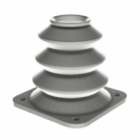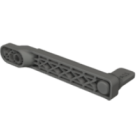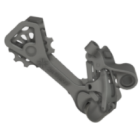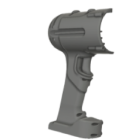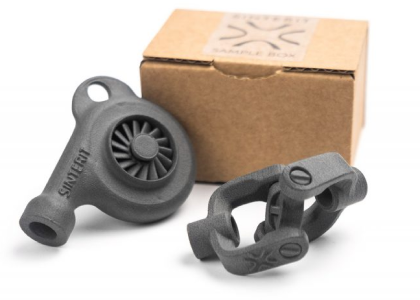3D printing history
To truly appreciate where 3D printing is today — and where it’s heading — it’s worth understanding how far it has come. The history of 3D printing is not just a story of machines, but of evolving mindsets around design, production, and innovation. What began as a niche prototyping technique has grown into a core pillar of digital manufacturing.
From garage experiments to aerospace production lines, the evolution of 3D printing spans over four decades of continuous development. Here’s how it all began — and why it matters now more than ever.
The origins: 1980s innovation
While it feels like a modern breakthrough, 3D printing has been around since the early 1980s. The first patented process — stereolithography (SLA) — was developed by Chuck Hull in 1984. His idea of building objects layer by layer using UV-curable resin laid the foundation for what we now call additive manufacturing. This was the beginning of the 3D printing history timeline, even though the term itself wasn’t widely used yet.
Soon after, other methods like Fused Deposition Modeling (FDM) and Selective Laser Sintering (SLS) emerged. These technologies expanded the possibilities of material usage — from liquids to thermoplastics and powdered polymers — and set the stage for further innovation.
The 1990s to 2000s: industrial adoption
In the 1990s, additive manufacturing started to gain traction in aerospace, automotive, and medical sectors. Machines were large, expensive, and slow — mostly reserved for R&D and prototyping. Still, they provided a faster and more flexible alternative to traditional manufacturing in early design stages.
Key players like Stratasys, 3D Systems, and EOS helped shape the landscape, refining technologies and establishing early industrial standards. The groundwork was laid for the evolution of 3D printing as a viable tool across multiple disciplines.
The consumer boom: 2010s
The 2010s marked a shift from industrial exclusivity to mainstream awareness. Patents for FDM expired, giving rise to a wave of open-source projects and affordable desktop 3D printers. Platforms like RepRap and companies such as MakerBot fueled a DIY revolution, allowing hobbyists, educators, and small businesses to get hands-on with the technology.
While this democratization brought excitement, it also created misconceptions — that 3D printing was simple, cheap, and instantly scalable. The reality was more nuanced, but the movement undeniably accelerated awareness and global interest.
Present day: industrial maturity
Today, 3D printing is firmly embedded in modern manufacturing strategies. From end-use parts in aerospace to customized medical implants, the applications are real, scalable, and economically justified. Technologies like SLS, MJF, and DMLS are driving this shift, delivering high-quality functional components directly from digital designs.
Industries now leverage digital inventories, on-demand tooling, and rapid prototyping as part of their competitive edge. While the hype has leveled out, adoption continues to grow, grounded in solid ROI and proven case studies.
How old is 3D printing?
In simple terms: 3D printing has been around for over 40 years. But its evolution — from niche prototyping tool to a pillar of modern manufacturing — has been anything but linear. It reflects broader shifts in digital design, automation, and supply chain strategy.
Summary
The evolution of 3D printing spans four decades of innovation — from SLA’s resin-based origins in the 1980s to today’s high-performance powder-bed fusion systems. Understanding this journey helps put current capabilities and limitations into perspective. Additive manufacturing isn’t a trend — it’s an industrial transformation still unfolding.
Explore also
- What is print 3D? Concept of 3D printing
- What does “3D printed” mean?
- Example of 3D printing
- How does 3D printing work?
- Slicing in 3D printing
- What do you need for 3D printing?
- 3D printing benefits
- Is 3D printer dangerous? Understanding the real risks
- 3D printing issues
- 3D printing facts
- Who uses 3D printers? Not just for engineers anymore
- Where 3D printing is used
- 7 common 3D printing myths
Related categories




